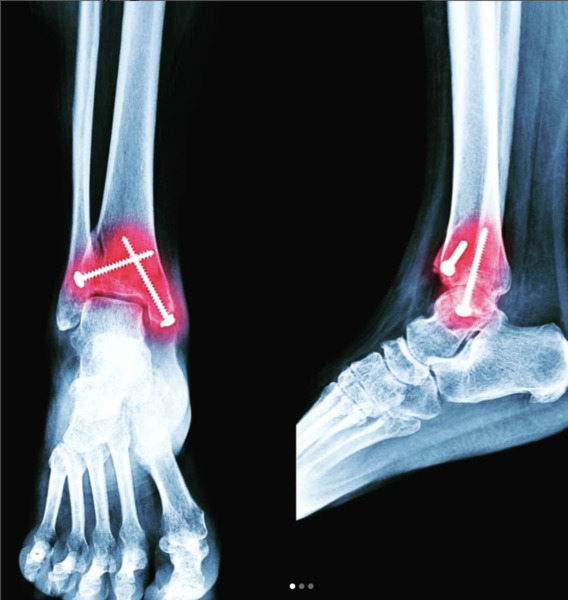Know more about Pott’s fracture – its causes and symptoms
What is a Pott’s fracture?
A Pott’s fracture is a type of ankle fracture that is characterized by a break in one or more bony prominences on the sides of the ankle known as the malleoli. The lower leg comprises of two long bones (tibia and the fibula) which are situated beside each other. The tibia bone lies on the inner aspect of the lower leg and joins with the fibula and talus to form the ankle joint. The tibia has a bony process situated at the inner aspect of the ankle known as the medial malleolus. One situated at the back of the ankle known as the posterior malleolus. Whilst the fibula has a bony process situated at the outer aspect of the ankle known as the lateral malleolus.
How does a Pott’s fracture occur?
During certain activities such as landing from a jump, stress is placed on the tibia and fibula. When this stress is traumatic, and beyond what the bone can withstand, a break in the medial, lateral or posterior malleolus may occur. When this happens, this condition is known as a Pott’s fracture. 🦶
Because of the large forces required to break the tibia or fibula, a Pott’s fracture often occurs in combination with other injuries such as a sprained ankle or other fractures of the foot, ankle or lower leg. Also, pott’s fractures can vary in location, severity and type including displaced fractures, un-displaced fractures, bimalleolar fractures, trimalleolar fractures, compound fractures, hairline, spiral, comminuted etc.
Signs and symptoms of a Pott’s fracture
- a sudden onset of sharp, intense ankle or lower leg pain at the time of injury
- an audible sound, such as a “crack” or “snap”
- swelling, bruising and pain on firmly touching the affected region of bone 🦴
- has experience pins and needles or numbness in the lower leg, foot or ankle (occassionally)
- an obvious deformity may be noticeable for severe cases
Moreover, initial treatment will differ greatly depending on the type of Pott’s fracture that has occurred. The length of the immobilisation period is also dependent on the severity of the fracture. Small fractures may heal much faster than larger fractures that require major surgery.
Suffering from this condition? One of our podiatrist can assist and give the right management protocols for your condition. ✅
Schedule an appointment here or you may call us at 44 (0) 207 101 4000. 📞
We hope you have a feettastic day! 👣☀️
-The Chelsea Clinic and Team




